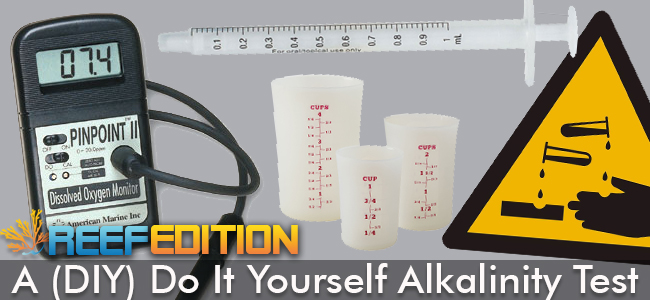I plan to try titration to measure saltwater alkalinity and as I don’t yet have a pH meter thought I might see how it went using an indicator. Still waiting on supply of standard 0.1N HCl so I haven’t tried this yet. Here in the UK an indicator TA4 is marketed for alkalinity testing, after ordering some I later learned this is just methyl orange. Reading up on methyl orange I see it should just start to change from yellow to orange at pH 4.4. It’s a fairly narrow range indicator though this is still above the pH endpoint when it would become red. So I guess the method is to titrate until the solution just becomes orange, at which point I assume we have a reasonably accurate measure of alkaline buffer neutralisation?
I am not sure how accuracy of the method would compare to a pH meter based titration, I imagine it is slightly reduced but probably is way better than using a test kit and counting drops? Does anyone have any measurements?
Equipment here is a 50ml burette and flask. My understanding based on reading here is that if I dilute the acid to 0.01N (I have volumetric flasks) and titrate 10ml seawater I would need a volume that equals alkalinty in mEq. Low for accurate use of a 50ml burette. I suspect it is best to either dilute the acid to 0.001N (introducing greater inaccuracy) or perhaps use 100ml samples with 0.01N HCl , giving me an approx 25ml acid requirement. Appreciate some expert checking of my logic here, the last titration I did was at school!
Steve
I am not sure how accuracy of the method would compare to a pH meter based titration, I imagine it is slightly reduced but probably is way better than using a test kit and counting drops? Does anyone have any measurements?
Equipment here is a 50ml burette and flask. My understanding based on reading here is that if I dilute the acid to 0.01N (I have volumetric flasks) and titrate 10ml seawater I would need a volume that equals alkalinty in mEq. Low for accurate use of a 50ml burette. I suspect it is best to either dilute the acid to 0.001N (introducing greater inaccuracy) or perhaps use 100ml samples with 0.01N HCl , giving me an approx 25ml acid requirement. Appreciate some expert checking of my logic here, the last titration I did was at school!
Steve



















